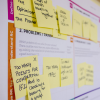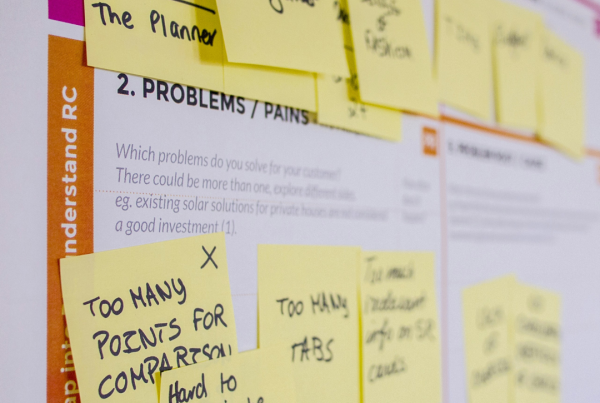Part 2 of ‘How to Build A Design Agency for Under $3K in 5 Years’
Welcome to the second part of my 6-month miniseries on how to build a successful design agency from scratch for under $3000.
In my first post, I outlined the steps to get you started on the right foot:
-
Step 1: Find your “why”
-
Step 2: Save money
-
Step 3: Get a part-time job or steady income to survive
-
Step 4: Buy your tools
-
Step 5: Hustle
I hope you’re now at a stable financial position with at least $2000 of emergency cash. On top of this, you’re working hard to make an income for your business while working a part-time gig to support yourself. Finally, I hope you’re working from home and not in some fancy office or co-working space you’re wasting money on.
Next are crucial steps of bringing your business to life. Up to this instance, you’ve been doing projects here and there with many clients. You’ve probably been taking on any job, even small ones, to make ends meet. You could say your design agency sits somewhere between a freelancing outfit and a proper business.
It’s time to give your business an identity.
Step 6: Create your brand
Building a brand isn’t as tough as it seems, mainly because nothing’s set in stone when you first start out. You can still change the direction if you’ve made a mistake. While these are crucial steps to build a successful agency, I wouldn’t sweat too much on your branding if your core principles and essences are there.
First, let’s talk about what a brand is. A brand is an accurate representation of you and what you offer. It is more than a name, logo or tagline. In the early days, this comes down to 3 simple things: Your principles, your capabilities and your services.
Write these 3 things down and revise until you are happy with the outcome.
Next, you need a brand name. For creatives, this can be troublesome because we tend to overthink in finding a name that satisfies the artistic and commercial point of view.
Do yourself a favour and don’t waste too much time on it.
At the end of the day, it boils down to your work and capabilities. The faster you can put yourself out there, the better for your business.
Pick a name that’s easy to remember, one that’s safe without conjuring unwanted images or ideas in people’s heads. Of course, it must be an original name that you can register legally with available domain names.
Personally, I’m not a big fan of using your name for your design agency. Psychologically, it could trigger an unwanted perception in your staff and clients’ minds — even yours — that the agency depends on you to function and grow. You may face issues when you need to pitch to investors, welcome new partners or hand over the reins.
Step 7: Create your portfolio
I hope you have at least 3 strong projects to showcase by now. Don’t worry about a small number because you’ll be doing more work later.
If you’re short of meaningful work because you’ve just started or can’t use a project due to confidentiality or intellectual property reasons, then do a spec work, which is a designer’s interpretation of an existing famous project.
Try to really sell each project.
Take people on a journey.
Tell them a story.
Show some numbers.
Make a project bigger than it looks.
I’ve made a $300 project looked like it was worth $3000.
Step 8: Build your online presence
Nowadays, there are many cheap options for your online home. You can build a website yourself, hire someone to build it, or use off-the-shelf solutions.
At this point, don’t splurge on anything flashy. A couple of hundred dollars a year should get you a decent site. Don’t go over $1000 or touch your $2000 emergency fund.
Next, you need to start building your online presence.
Do a little bit of research on all the social and online platforms worth being on such as LinkedIn, Facebook, Behance, etc. These are places where you can grow a network to find clients and showcase your masterpieces.
Just pick 1–2 platforms and make sure you are visible and contributing through your posts, articles and work. It shouldn’t take too much of your time, maybe allocate 1 hour a week.
It may be a slow burn, but the efforts are worth it in the long run.
Step 9: Take risks while turning a profit
I need to add that at this point, I was running Relab as a one-man show — pitching to clients, building websites and designing — the works. When I needed extra help with coding, I would outsource it to people I trust. My mainstay was mostly building and revamping websites around the 4-figure mark.
This was how I kept costs down.
I can’t stress enough how important it is to monitor your expenses and costs to turn a profit. Otherwise, you’ll be burning the midnight oil for nothing. And since I was still working part-time, I had more income to supplement my lifestyle and business.
So, how do you find clients?
I was lucky that I didn’t have to struggle to find new clients. My agency grew 100% through word of mouth. When I started out, I told everyone I knew in my phone book that I was available for work and what I could do. I’d say that most of my leads came from previous workplaces because I networked a lot when I was in those jobs.
And with every single project that I did, I made sure I delivered a great website at an affordable price, while still fulfilling most of my client’s requests. My strategy at that time was to do such an excellent job that clients would be stupid not to hire me again or recommend me to others.
This organic growth strategy was entirely possible then because I was still a one-man show and my cost base was low.
However, the landscape is more competitive nowadays. You should be promoting yourself on key channels. Inbound and social media marketing is huge, offering plenty of ways to network and advertise yourself. You can also try a few of the outsourcing or hiring platforms as I know some people who got a lot out of it.
”Remember to push yourself out of your comfort zone. But take measured risks and don’t bite more than you can chew.
That was a painful lesson for me, when I took on a big project once single handedly that resulted in a messy result, and not to mention the profound stress!
It taught me that being honest with your customer is good but being honest with yourself is even better. Once you are man enough to acknowledge your strengths and weaknesses, I’d say that’s the turning point when your agency will start to grow.
Until we get to that lesson in this miniseries, put your head down and keep on working. Whatever you do, don’t quit your part-time job yet. It’s a hard slog but is necessary to put your agency on a stable footing.
Stay hungry and stay smart.
Illustrations by: Irenne Tj
https://www.instagram.com/irennetj/
https://www.facebook.com/inspirationneverends/







